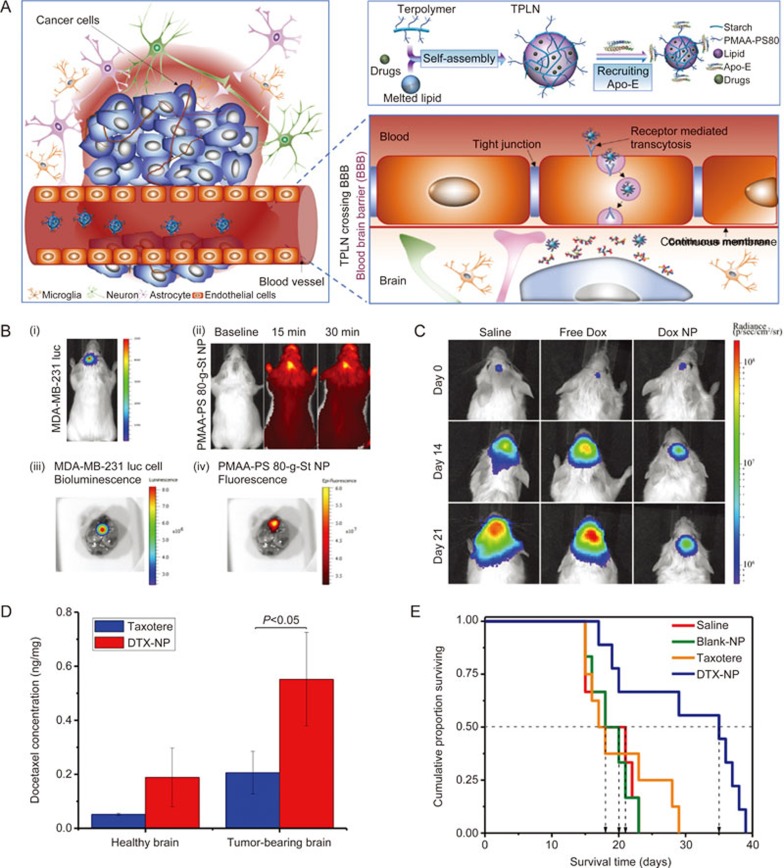Figure 5.
Harnessing the physiology of naturally occurring lipoprotein to design self-decorating terpolymer NPs or terpolymer-lipid hybrid NPs (TPLN) for drug delivery to the brain. (A) Schematic of the receptor-mediated transcytosis mechanism of PMAA-PS 80 (terpolymer)-containing polymeric NPs penetration through the BBB to deliver encapsulated drug to brain cancer cells. (B) In vivo bioluminescent images of brain tumors and optical whole-body and ex vivo images of brain accumulation of NP. The brain metastases of MDA-MB-231-luc-D3H2LN cells in NRG-SCID mice were established by intracranial injection: (i) Bioluminescence of luciferase expressing tumor cells in the inoculated brain tumors 10 min following ip injection of luciferin solution; (ii) PMAA-PS 80-g-St NPs were labeled with a near infrared dye (HiLyte Fluor 750) and imaged after iv tail vein injection; (iii) Bioluminescent image of brain tumor; (iv) Fluorescence image of nanoparticles in an excised mouse brain. (C) In vivo images of brain tumor bioluminescence showing tumor growth inhibition in NRG-SCID mice. (D) Docetaxel (DTX) concentration in tumor-bearing brains at 15 min after iv injection of DTX-NP compared to Taxotere® (free DTX in solution). The concentration of DTX in the perfused brains of mice was quantified using LC-MS/MS following iv injection of DTX-NP or Taxotere® at the dose of 20 mg/kg DTX. All data are mean±standard deviation (SD) (n=3). (E) Kaplan–Meier survival curve of tumor-bearing mice following the treatment of saline, blank NP, Taxotere® (20 mg/kg DTX) or DTX-NP (20 mg/kg DTX). All data are mean±standard deviation (SD) (n=9). Figure 4B, 4C and Figure 4D, 4E are reproduced from Li et al128 and He et al130, respectively with permission.

